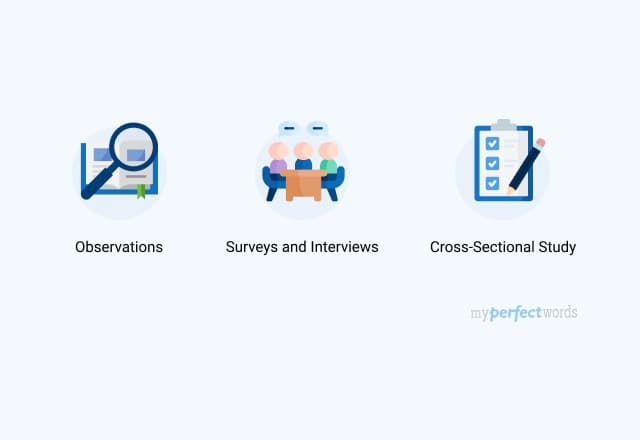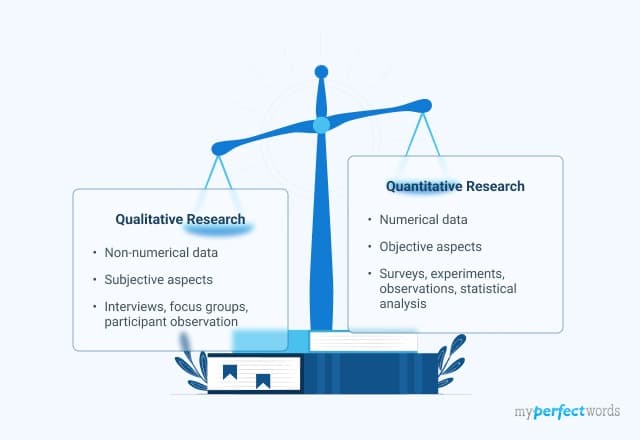
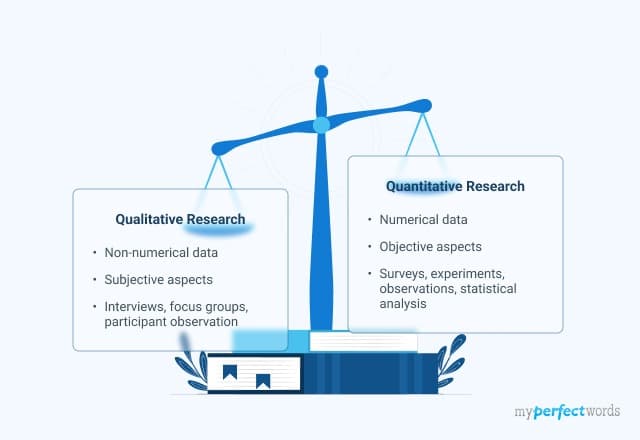
Are you a research student wondering whether to conduct qualitative or quantitative research? Every researcher faces this decision, and it’s often confusing.
So what is qualitative and quantitative research, and how are they different?
Understanding the differences between the qualitative and quantitative methods is essential for an efficient research plan. But this is exactly where many students fail. Not knowing about these two approaches can often lead to wrong research decisions.
This blog compares qualitative and quantitative research and explores the definitions, features, and advantages of each approach. By the end, you will be well-acquainted with their differences and will be able to choose the best approach for your research paper.
So, let’s head on!
On This Page![]()
- 1. Qualitative vs. Quantitative Research: An Introduction
- 2. Qualitative vs. Quantitative Research Features
- 3. Qualitative vs. Quantitative Research Questions
- 4. Qualitative vs. Quantitative Research Methodology
- 5. Qualitative vs. Quantitative Research: Limitations
- 6. Advantages and Disadvantages of Qualitative and Quantitative Research
- 7. When to Use Qualitative vs. Quantitative Research?
- 8. How to Analyze Qualitative Vs. Quantitative Data?
- 9. Qualitative vs. Quantitative Research Examples
Qualitative vs. Quantitative Research: An Introduction
Among the various types of research, qualitative and quantitative are two primary methods. Below are the definitions of both qualitative and quantitative research methods:
Qualitative Research Definition
Qualitative research is a research methodology that seeks to study the meanings, perceptions, and complexities of human experiences, behaviors, and phenomena. This approach aims to understand the nuances of social, cultural, and individual contexts, providing a holistic view of the topic under investigation.
Different types of qualitative research often utilize various data collection techniques, including in-depth interviews, focus groups, participant observation, and content analysis, to explore the subjective aspects of a research question.
Quantitative Research Definition
Quantitative research is a systematic and structured research methodology that focuses on collecting and analyzing numerical data to draw objective conclusions. It aims to uncover patterns, relationships, and trends within a given population or sample.
Quantitative research relies on standardized instruments and statistical techniques to quantify variables and test hypotheses. Quantitative research is widely utilized in disciplines such as economics, psychology, epidemiology, and the natural sciences, where precision, replicability, and the ability to quantify phenomena are paramount.
Qualitative vs. Quantitative Research Features
Here are some features of qualitative and quantitative research.
Features | Qualitative Research | Quantitative Research |
Data Type | Non-numerical data (e.g., text, images, narratives). | Numerical data (e.g., statistics, data, measurements). |
Research Focus | Subjective aspects, meanings, perceptions, and complexities. | Objective aspects, numerical data, patterns, and relationships. |
Methods | Interviews, focus groups, participant observation, content analysis, textual interpretation. | Surveys, experiments, observations, statistical analysis, standardized |
Now let’s explore each of their features in detail.
Features of Qualitative Research
Qualitative research possesses several distinctive features that set it apart from quantitative research. The features of qualitative methods include:
- Non-Numerical Data: In qualitative research, data comes in the form of non-numerical information such as text, images, narratives, or audiovisual materials.
- Subjective Exploration: The primary focus of qualitative research is on understanding subjective aspects, including meanings and perceptions. It seeks to explore the "why" and "how" behind human behavior and experiences.
- Flexible and Contextual Methods: Qualitative researchers employ a variety of methods such as interviews, focus groups, participant observation, and content analysis.
- In-Depth Understanding: Qualitative research aims to provide an in-depth understanding of the phenomena under study. Researchers often employ open-ended questions and allow participants to express themselves freely, leading to rich, detailed data that can uncover hidden insights.
- Narrative and Thematic Analysis: Data analysis in qualitative research involves techniques like thematic analysis, content analysis, and narrative interpretation. Researchers identify recurring themes, patterns, and stories within the data to derive meaning and understanding.
Features of Quantitative Research
Quantitative research, on the other hand, is characterized by its own unique set of features:
- Numerical Data: Quantitative research collects and analyzes numerical data, often involving measurements, counts, or statistical values. This data allows for precise quantification and statistical analysis.
- Objective Examination: The primary focus of quantitative research is to objectively examine and measure aspects of the research subject. It aims to answer questions related to "what," "how much," and "how often" through empirical observation.
- Standardized Instruments: Researchers employ standardized instruments, such as surveys, experiments, and validated scales, to collect data in a consistent and replicable manner. This standardization ensures the reliability and validity of the data.
- Statistical Analysis: Quantitative research relies heavily on statistical analysis to identify patterns, relationships, and associations within the data. Researchers use statistical tests to test hypotheses and draw generalizable conclusions.
Qualitative vs. Quantitative Research Questions
One of the fundamental aspects that differentiate qualitative and quantitative research is the types of questions they seek to answer.
Research problems also known as research questions serve as the compass guiding the entire research process. They influence the choice of methodology, data collection methods, and data analysis techniques.
Let’s explore the differences between qualitative and quantitative research questions.
Qualitative Research Questions | Quantitative Research Questions |
Start with "How" or "Why." | Begin with "What" or "How many." |
Identify the subject of inquiry | Identify the independent and dependent variables |
Have more specific sub-questions | Three types of questions i.e., descriptive, casual, and predictive. |
Example: "How do individuals perceive job satisfaction in the workplace?” | Example: "What is the relationship between age and job satisfaction?” |
Qualitative Research Questions
Here are the qualities that characterize qualitative research questions:
- The questions usually start with ‘what’ or ‘how’.
- It helps to identify the main subject that you are planning to study.
- It shows what the study is going to describe, explore, and discover in detail.
- It can contain words like experience, meaning, understanding, and stories.
- It can have sub-questions that will be more specific.
The examples of the qualitative research questions are:
- How can overweight people describe their meal timings?
- What does it feel like growing up in a single-parent family?
Quantitative Research Questions
Quantitative research questions have the following characteristics:
- The questions usually start with ‘how’, ‘what’, and ‘why’.
- They contain an independent and dependent variable.
- They ask about the relations between the variables.
- Quantitative research questions can be of three types. They can be descriptive, casual, or predictive.
The examples of these research questions are:
- What are the differences in academic performance (measured by GPA) between students who receive online instruction and those who attend traditional in-person classes?
- Is there a statistically significant relationship between the amount of time individuals spend exercising per week and their body mass index (BMI)?
Qualitative vs. Quantitative Research Methodology
There are several methods to collect qualitative and quantitative data for research. These methods are suited for different kinds of research questions and research goals.
This infographic shows the different methods of qualitative and quantitative research.
Qualitative Data Collection Methods
The methods for collecting qualitative data include:
- Interviews - In-depth interviewing is a face-to-face session where you learn about different concepts from experts. It may include structured, unstructured, or semi-structured questions.
- Focus Groups - These are small group discussions designed to target a specific issue or point. Each member expresses their point of view on a selected topic and gathers opinions for future research.
- Ethnography - Here, a researcher participates in a community or organization for an extended time. The main aim is to observe the culture and behavior closely.
- Case Studies - It involves an in-depth study of a person, group, or organization.
- Literature Review - This is a detailed survey of published work by other authors.
The sample size is small, and the respondents are selected to collect the required data.
Quantitative Data Collection Methods
The following are the methods of collecting quantitative data.
- Surveys: This includes a list of questions that is distributed to the selected sample. With this, a researcher gathers feedback from the subjects. Similarly, surveys can have both open and closed-ended questions.
- Secondary Data: This includes the collection and analysis of non-primary data. Such as company accounts and other related numerical data.
- Observational Research: It involves participant observation in a natural environment where it is impossible to control the variables.
- Experiments: Here, a researcher controls and manipulates the variables to establish a cause-and-effect relationship.
- Content Analysis: It helps record words and themes in a set of texts to analyze communication patterns.
Qualitative vs. Quantitative Research: Limitations
Both qualitative and quantitative research have their set of limitations. The table below points out some of their limitations:
Qualitative Research | Quantitative Research |
Limited generalizability | Potential for oversimplification |
Subjectivity and Bias | Limited exploration of context |
Results are not replicable | Ethical challenges with the manipulation of data |
Time-consuming | Data analysis can be manipulated and determined by the chosen frameworks |
The following is a detailed explanation of the research limitations.
Limitations of Qualitative Research
- Limited Generalizability: Qualitative studies typically involve smaller, non-random samples, making it challenging to draw universal conclusions.
- Subjectivity and Bias: Qualitative research relies on the interpretation of researchers and participants. This subjectivity can introduce bias into the data collection and analysis process.
- Time-Consuming: Qualitative research can be time-intensive. Data collection methods such as in-depth interviews and participant observation require significant time commitments. Additionally, the analysis of qualitative data, involving coding and thematic analysis, can be a lengthy process.
- Limited Quantification: Qualitative data are non-numerical, which makes it difficult to quantify findings and conduct statistical analyses. This limitation can restrict the ability to make precise and statistically significant statements.
- Difficulty in Replication: Due to the contextual and subjective nature of qualitative research, replicating qualitative studies can be challenging.
Limitations of Quantitative Research
- Potential for Oversimplification: Quantitative studies may oversimplify human behavior by reducing it to measurable variables. This can overlook the intricate interplay of factors that influence real-world phenomena.
- Limited Exploration of Context: Quantitative research may not fully explore the contextual factors that can influence outcomes. It may not capture the "how" and "why" behind numerical trends.
- Assumption of Homogeneity: Quantitative research often assumes homogeneity within groups, potentially masking individual differences or subgroup variations within a larger sample.
- Ethical Challenges: Some quantitative research designs, such as experimental studies, may raise ethical concerns when random assignment or manipulation of variables is involved. Researchers must adhere to strict ethical guidelines.
- Data Validity and Reliability: The validity and reliability of quantitative data depend on the quality of measurement instruments and the accuracy of data collection. Inaccurate measures or errors in data collection can compromise the study's results.
Advantages and Disadvantages of Qualitative and Quantitative Research
Now that we know what qualitative and quantitative research entails, let’s take a look at their pros and cons.
Here’s what each type of research brings to the table:
Qualitative Research | Quantitative Research |
Pros | |
|
|
Cons | |
|
|
Pros and Cons of Qualitative Research
Qualitative research is suitable for some types of research, but not for others. Here are some of its pros and cons.
Pros
- In-Depth Exploration: Qualitative research excels in providing a deep and nuanced understanding of complex human experiences, behaviors, and phenomena. It allows researchers to explore the "why" and "how" behind these aspects, revealing rich insights.
- Contextual Understanding: Qualitative research is well-suited for studying the context in which phenomena occur. It considers the influence of social, cultural, and environmental factors, offering a holistic view.
- Flexibility: Qualitative methods are flexible and adaptive, allowing researchers to adjust their approach during the study to capture emerging themes and unexpected insights.
- Participant Perspectives: This approach values the perspectives and voices of participants, making it ideal for capturing diverse and authentic viewpoints.
- Rich Data: Qualitative data often include detailed narratives, quotes, and descriptions, which can be compelling and illuminating for readers.
Cons
- Limited Generalizability: Qualitative findings are context-specific and may not be easily generalized to broader populations. The small, non-random samples used can limit the applicability of results.
- Subjectivity and Bias: The interpretation of qualitative data is subjective and can introduce bias, both from researchers and participants. Ensuring rigor and objectivity can be challenging.
- Resource-Intensive: Qualitative research can be time-consuming and may require substantial resources for data collection, transcription, and analysis.
- Difficulty in Replication: Due to its contextual and subjective nature, replicating qualitative studies can be challenging, which can affect the reliability of findings.
Pros and Cons of Quantitative Research
Similar to qualitative research, quantitative methods have their limitations and advantages. Here are some of the pros and cons of quantitative research.
Pros
- It allows the researcher to measure and interpret the collected data.
- The researcher is more objective about the findings of the research study.
- It studies a detailed relationship between independent and dependent variables.
- It can test the hypothesis in experiments.
- It can measure data with statistical principles, making it reliable.
Cons
- It completely ignores the context of the research study or experiment.
- It cannot study concepts in natural settings.
- The timeline, complexity, and cost of research are increased to get accurate results.
When to Use Qualitative vs. Quantitative Research?
Selecting between qualitative and quantitative research methods depends on several factors. These include:
- Research objectives
- The nature of the research question
- Practical aspects (time, money, availability of data, and characteristics of the subject being studied)
The following table lists out the situations where it is more appropriate to choose either type of research:
Use Qualitative Research When | Use Quantitative Research When |
Exploring complex, multifaceted phenomena | Testing specific hypotheses |
Understanding context and nuances | Generalizing findings to a population |
Generating hypotheses or refining questions | Measuring trends and patterns |
Gaining participant perspectives | Comparing groups or variables |
Exploring "why" and "how" questions | Conducting efficient large-scale surveys |
Investigating motivations and meanings | Tracking changes over time |
Emphasizing the voices of participants | Assessing impact or causality |
Employing open-ended exploration | Ensuring objectivity and reducing bias |
Use Qualitative Research When:
- Exploring Complex Phenomena: Qualitative research is well-suited for exploring complex and multifaceted phenomena that involve a range of interrelated factors. It enables researchers to delve deep into the intricacies and uncover hidden insights.
- Understanding Context: When context matters significantly, such as in sociocultural or environmental studies, qualitative research excels at capturing the nuances and contextual factors that influence behaviors and experiences.
- Generating Hypotheses: Qualitative research can be a valuable precursor to quantitative studies. It can help generate hypotheses or refine research questions before embarking on larger-scale quantitative investigations.
- Gaining Participant Perspectives: If you want to prioritize the voices and perspectives of participants, qualitative methods allow for a more authentic and in-depth exploration.
- Exploring "Why" and "How": Qualitative research is particularly adept at answering questions that begin with "why" and "how." It delves into the underlying motivations, meanings, and processes behind human behaviors and experiences.
Use Quantitative Research When:
- Testing Hypotheses: Quantitative research is ideal when you have specific hypotheses to test. It allows for rigorous statistical analysis to determine the strength and significance of relationships between variables.
- Generalizing Findings: If you aim to make generalizations about a larger population based on your study's results, quantitative research's ability to provide representative and generalizable data is a key advantage.
- Measuring Trends and Patterns: When you want to measure trends, patterns, or numerical relationships, quantitative methods offer the precision and quantifiability required for such analyses.
- Comparing Groups: Quantitative research is valuable for comparing groups, conditions, or variables in a systematic and objective manner. It can help assess the impact of interventions or differences between demographic groups.
- Efficiency and Large-Scale Surveys: When conducting research on a large scale or when efficiency in data collection and analysis is crucial, quantitative methods are often more practical and cost-effective.
- Tracking Change Over Time: If your research involves tracking changes over time or assessing the impact of variables on outcomes, quantitative longitudinal studies can provide valuable insights.
How to Analyze Qualitative Vs. Quantitative Data?
Qualitative and quantitative research data can’t prove anything by itself. Instead, it has to be analyzed to show its relationship with the research questions. However, the method of analysis is different for each type of data.
Analyzing Qualitative Data
It is more complicated to analyze qualitative data than quantitative as it consists of texts, images, and videos. Common approaches to analyzing qualitative data include the following:
- Qualitative Content Analysis – It identifies the position and meaning of the words and phrases.
- Thematic Analysis – It examines the data to identify the themes and patterns.
- Discourse Analysis – It studies how communication works in a social context.
Analyzing Quantitative Data
Quantitative data usually consists of numbers, so they are analyzed through advanced statistical systems used to analyze the data patterns. Analyzing quantitative data involves the steps below:
- Inferential Statistics – Common techniques include t-tests, ANOVA, regression analysis, chi-squared tests, ad correlnation analysis.
- Data Visualization – It involves visual representations of data using charts, graphs, and plots.
- Data Cleaning – Ensure data accuracy by checking for missing values, outliers, and errors. Cleaning the data is essential for obtaining reliable results.
- Statistical Software – It involves using programs such as SPSS, R, or Excel to conduct data analysis.
Qualitative vs. Quantitative Research Examples
Have a look at the following examples of quantitative research vs. qualitative research for a better understanding.
To Conclude,
The choice between qualitative and quantitative methodologies is not a matter of one-size-fits-all. It’s a nuanced decision influenced by the intricacies of each unique study.
As this journey through qualitative vs quantitative research comes to a close, we should understand the strengths of these methodologies and sometimes even merge them through mixed methods.
By understanding their pros, limitations, and the appropriate contexts for their application, researchers can conduct research with greater skill and precision.
Need expert writing help for research? You’re in luck. MyPerfectWords.com is a reputed writing service dedicated to providing valuable assistance to students. We cater to all your 'do my paper' requests.
At our service, we connect you with skilled writers and researchers who craft insightful research papers to meet your academic needs.
So contact us for your ‘pay for research paper’ queries!

Write Essay Within 60 Seconds!
Use our AI tool to generate high quality essay-18976.png&w=256&q=75&dpl=dpl_932zZQyZ6qqr6Wj2ueuwZpxRi8Mc)
WRITTEN BY
Alexander P.
Harvard Law graduate. I build arguments anticipating every objection and dismantling it before it's raised. Airtight logic is non-negotiable.
Keep reading
Research Paper Writing - A Step by Step Guide
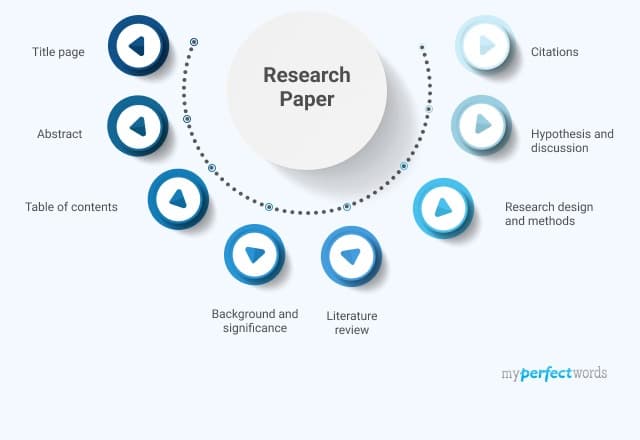
Research Paper Examples - Free Sample Papers for Different Formats!

Guide to Creating Effective Research Paper Outline
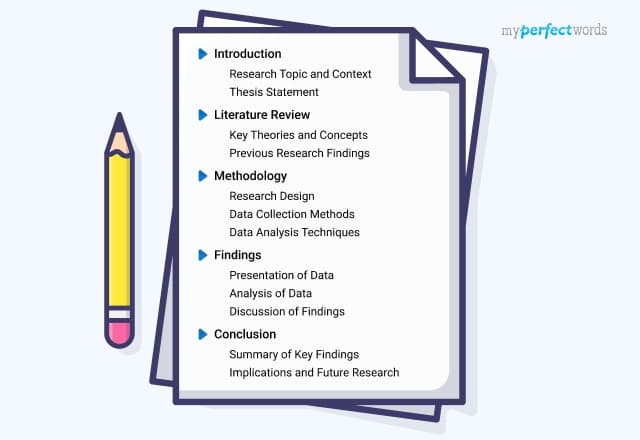
A Catalog of 300+ Research Paper Topics
-9352.jpg&w=828&q=75&dpl=dpl_932zZQyZ6qqr6Wj2ueuwZpxRi8Mc)
Research Proposal Writing - A Step-by-Step Guide
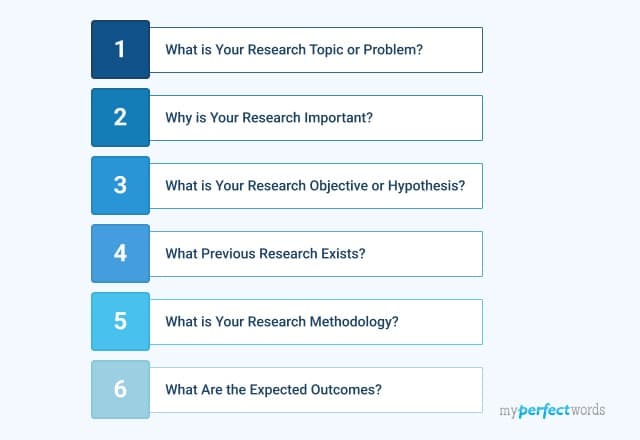
How to Start a Research Paper - 7 Easy Steps
-9374.jpg&w=828&q=75&dpl=dpl_932zZQyZ6qqr6Wj2ueuwZpxRi8Mc)
How to Write an Abstract for a Research Paper - A Step by Step Guide
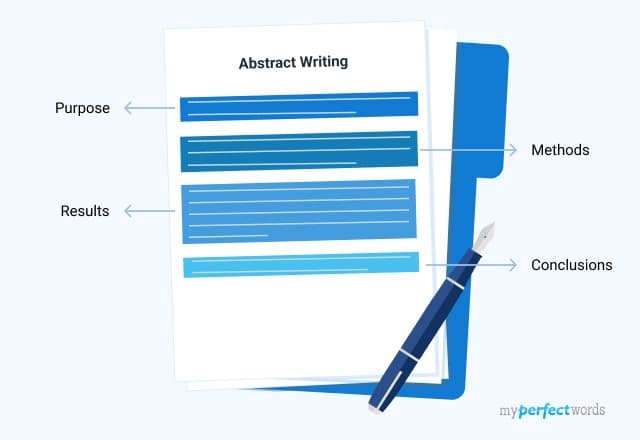
Writing a Literature Review For a Research Paper - A Comprehensive Guide

Qualitative Research - Methods, Types, and Examples

8 Types of Qualitative Research - Overview & Examples
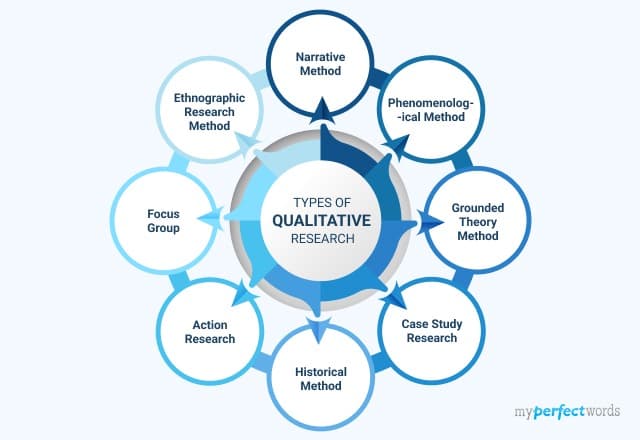
200+ Engaging Psychology Research Paper Topics for Students in 2025
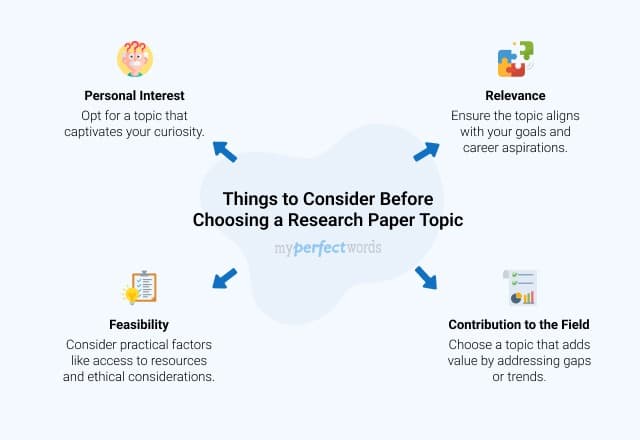
Learn How to Write a Hypothesis in a Research Paper: Examples and Tips!
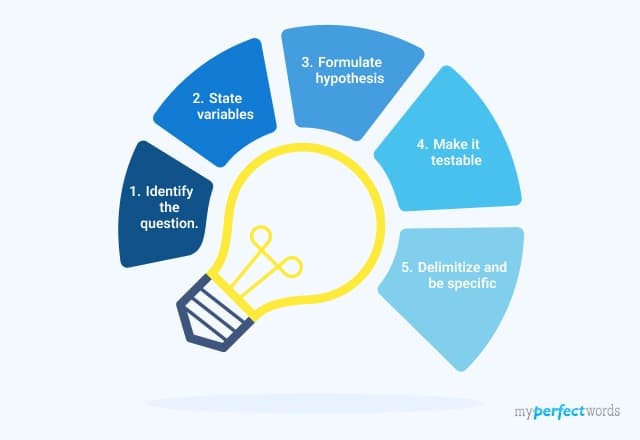
20+ Types of Research With Examples - A Detailed Guide
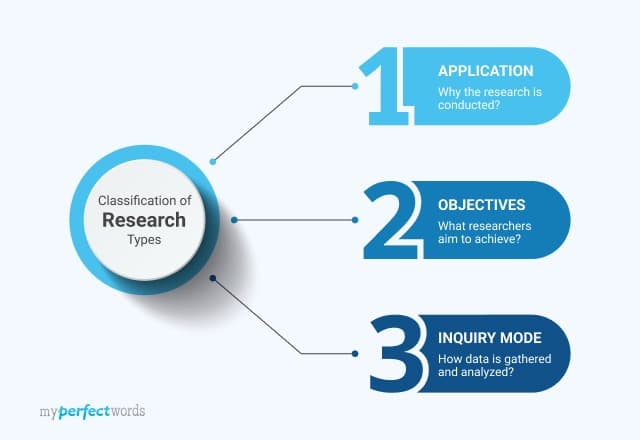
Understanding Quantitative Research - Types & Data Collection Techniques

230+ Sociology Research Topics & Ideas for Students
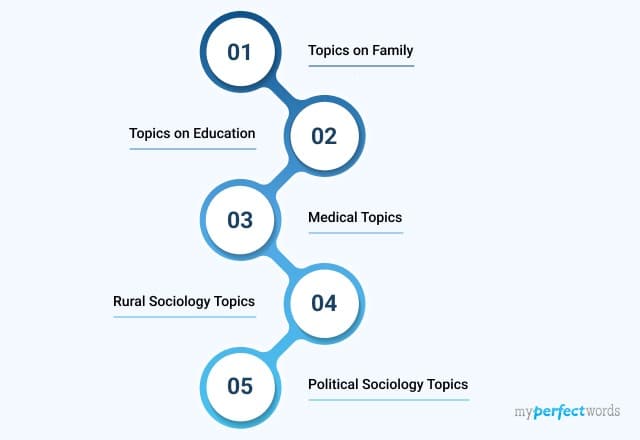
How to Cite a Research Paper - A Complete Guide

Excellent History Research Paper Topics- 300+ Ideas

A Guide on Writing the Method Section of a Research Paper - Examples & Tips
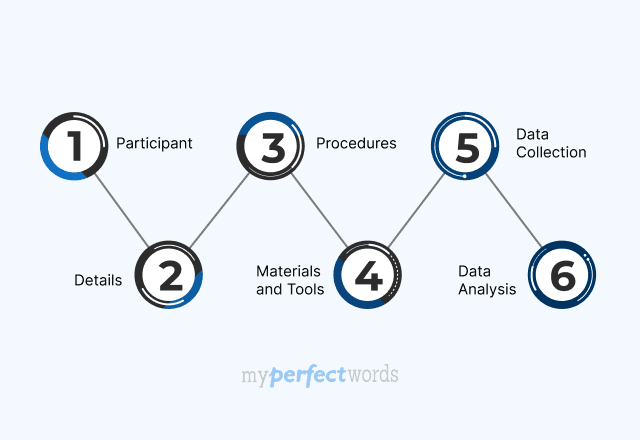
How To Write an Introduction Paragraph For a Research Paper: Learn with Examples
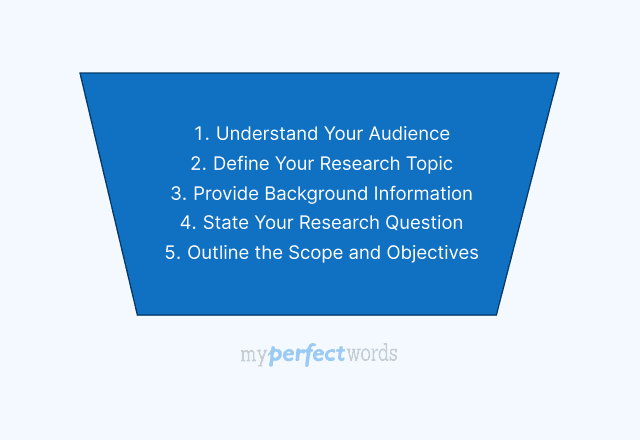
Crafting a Winning Research Paper Title: A Complete Guide
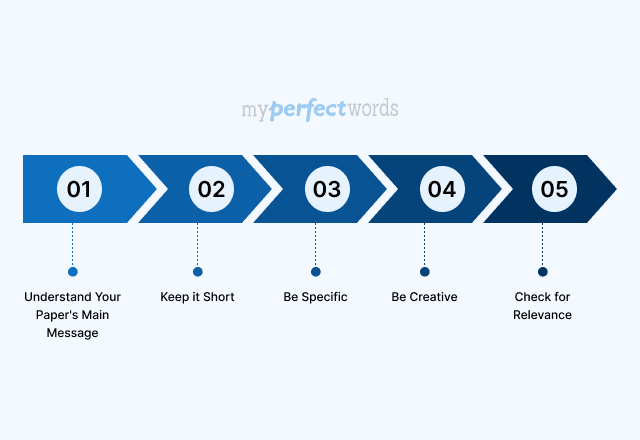
Writing a Research Paper Conclusion - Step-by-Step Guide

Writing a Thesis For a Research Paper - A Comprehensive Guide

How To Write A Discussion For A Research Paper | Examples & Tips
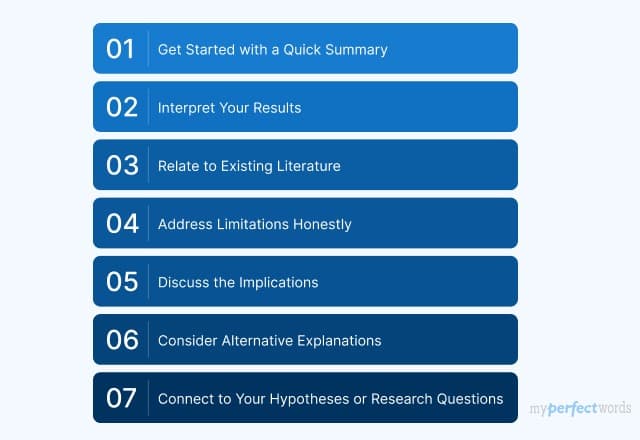
How To Write The Results Section of A Research Paper | Steps & Examples
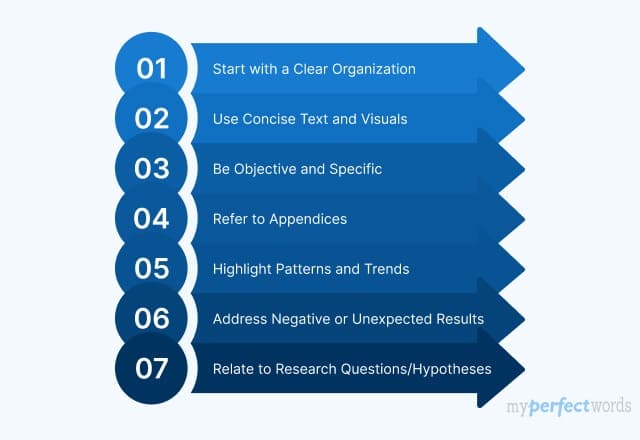
Writing a Problem Statement for a Research Paper - A Comprehensive Guide
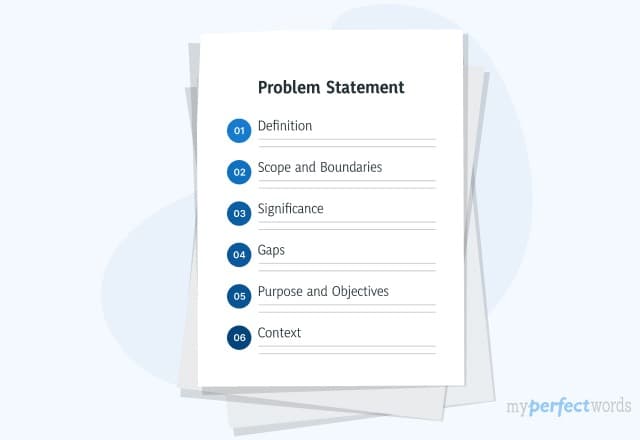
Finding Sources For a Research Paper: A Complete Guide
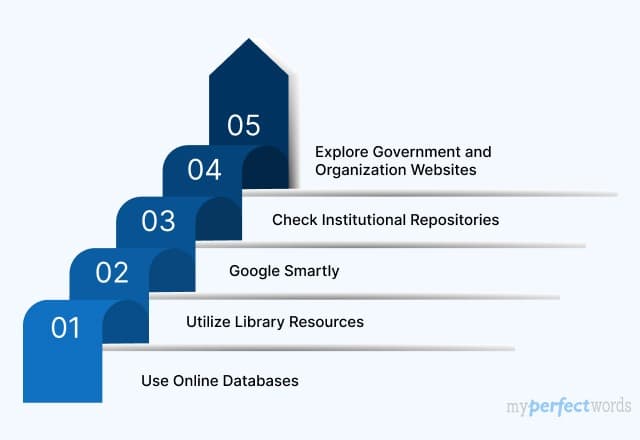
A Guide on How to Edit a Research Paper
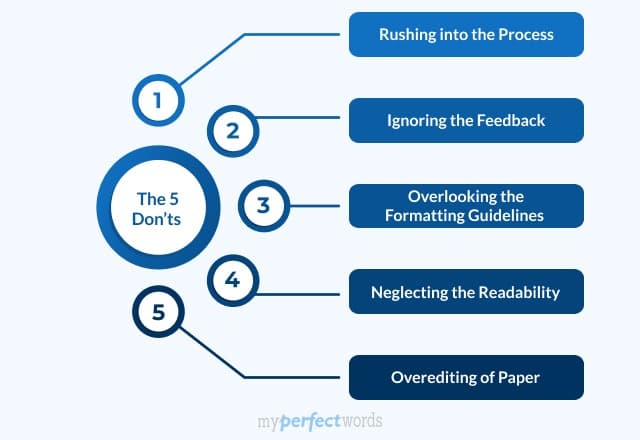
200+ Ethical Research Paper Topics to Begin With (2025)

300+ Controversial Research Paper Topics & Ideas - 2025 Edition
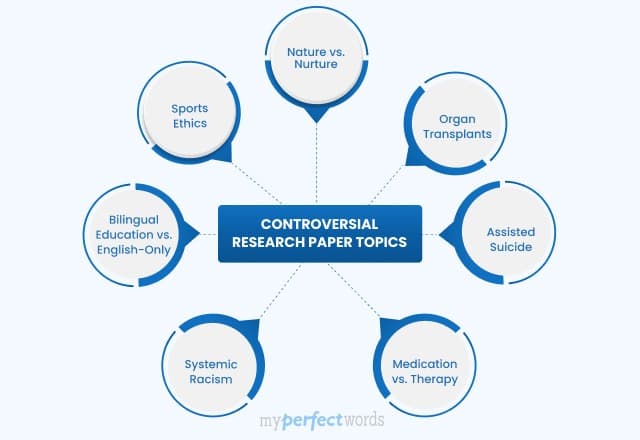
150+ Argumentative Research Paper Topics For You - 2025
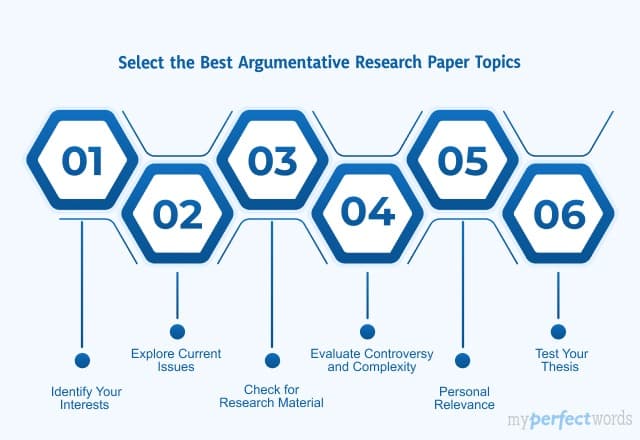
How to Write a Research Methodology for a Research Paper
